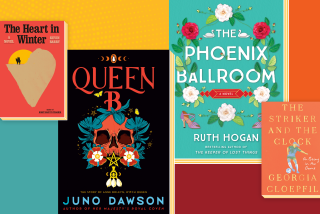‘The Delighted States’ by Adam Thirlwell
The Delighted States
A Book of Novels, Romances, & Their Unknown Translators,
Containing Ten Languages, Set on Four Continents,
& Accompanied by Maps, Portraits, Squiggles, Illustrations,
& a Variety of Helpful Indexes
Adam Thirlwell
Farrar, Straus & Giroux: 568 pp., $30
Why read literary criticism, you may well ask. With every boob and his bloggin’ brother doing it, there’s hardly time to read books and criticism. Best cut out the books altogether, for that matter, given the scorching pace of the Information Age. They take too long. The finest literary criticism, the stuff that lasts, prompts thought-provoking questions, hitherto unimagined points of view and context. It should never (we were always taught, ahem) overshadow its subject in histrionics, iconoclastic or otherwise.
Lit crit serves (and this is the fun part for a certain deluded, some say pathetic and isolated, portion of the population) to remind the reader that words on the page are a lot like clay and paint: “ ‘My idea of the artist, poet, painter, composer, etc, is the novelist,’ ” Adam Thirlwell writes, quoting artist Saul Steinberg in a new book of criticism, “The Delighted States.” “Steinberg’s art is characterized by an inversion, so that marks on flat paper are treated as real, whereas people and objects are unreal -- they are just handwriting, calligraphy.”
Thirlwell is fascinated by the novel as an international art form, by style and the translatability of that style, which he defines as “a list of methods by which a novelist achieves various effects.” He thoughtfully includes a list of things that cannot always be translated: “names, clothes, objects, brand names, clichés, puns, colloquial speech, bad syntax, elaborate syntax, alliteration, assonance, rhythm. What resists translation, therefore, is the most ordinary, unnoticed content. . . . “
Proust, he notes, says style isn’t a matter of technique; rather, “it’s like colour for a painter -- a quality of vision, the revelation of the particular universe that each of us sees, and that other people don’t see.” But style, like real life, cannot be too precious, controlled or confining. Real life is stylized, he says, “but it is messy as well. It is an accurate portrait of minute feelings.”
He wants to believe (as Milan Kundera and others have argued) that style is translatable; there is no such thing as nationalist literature, only the world literature of human experience. Even Tolstoy, the anti-stylist who believed in truth over élan, can be artfully translated. Thirlwell’s heroine is Juliet Herbert, toothsome governess to Flaubert’s niece, who made the first (and, the author claimed, best) English translation of “Madame Bovary.” The work was lost, Thirlwell posits, because Herbert, unlike Flaubert, was a practical sort, not given to saving things. “She did not want their privacy invaded.”
Thirlwell romps through European literature: Joyce, Gogol, Flaubert, Maupassant, Chekhov, Tolstoy, Hrabal, Kafka and others. (His book is not, as Thirlwell half-seriously asserts, a novel.) The anecdotes he chooses are delightfully obscure. The photos and illustrations (squiggles and flourishes meant to show the irrational wanderings of the human mind) are playful and evocative. He hyperventilates a bit, leaping around and making connections, but he has a good time, which is (ahem) always fun to watch. *
susan.reynolds@latimes.comSusan Salter Reynolds is a Times staff writer.
More to Read
Sign up for The Wild
We’ll help you find the best places to hike, bike and run, as well as the perfect silent spots for meditation and yoga.
You may occasionally receive promotional content from the Los Angeles Times.










